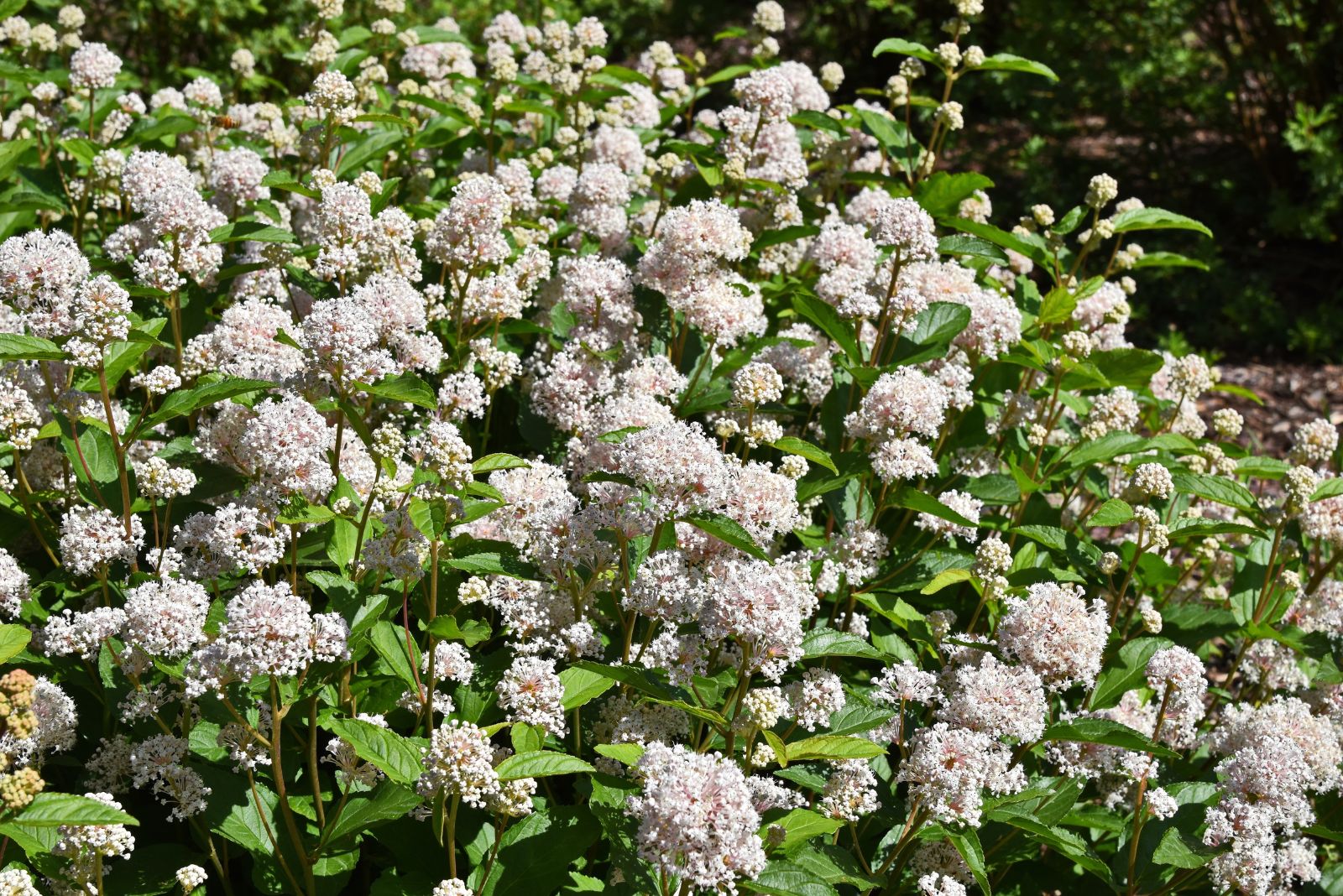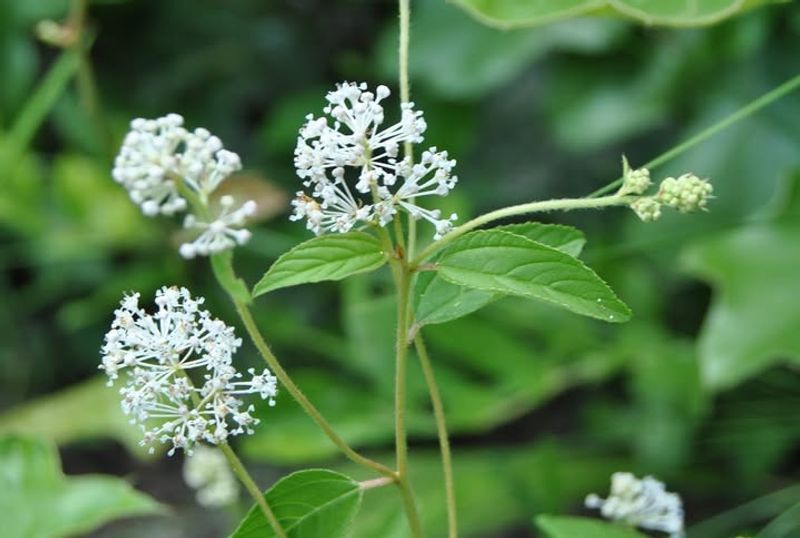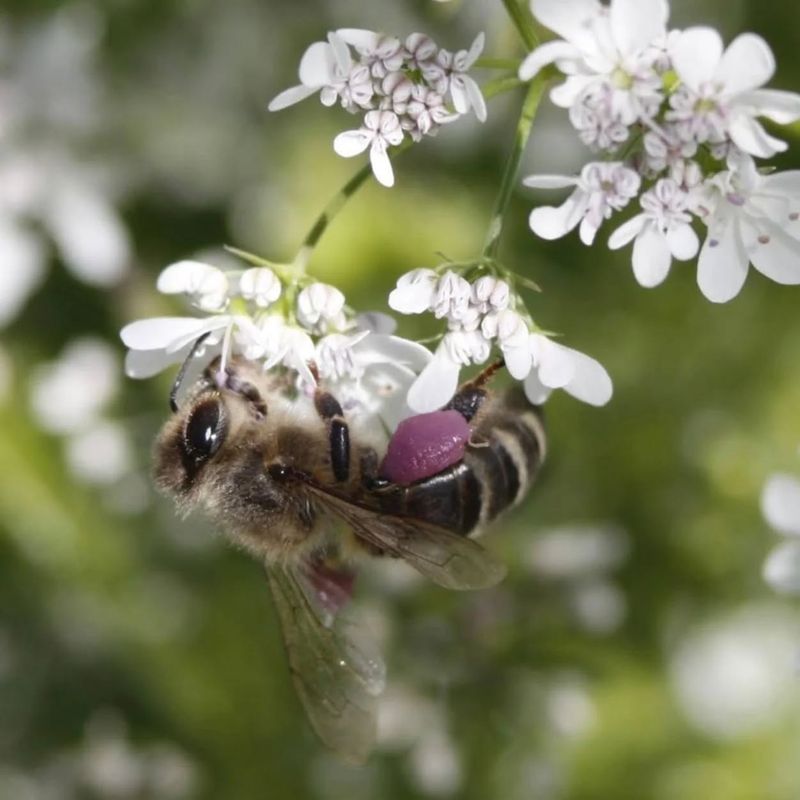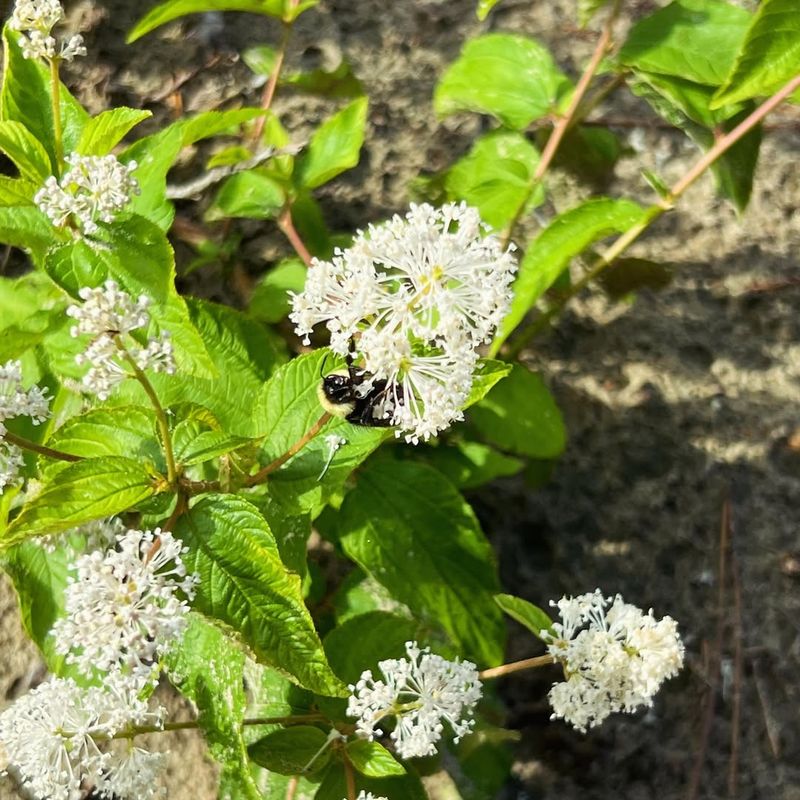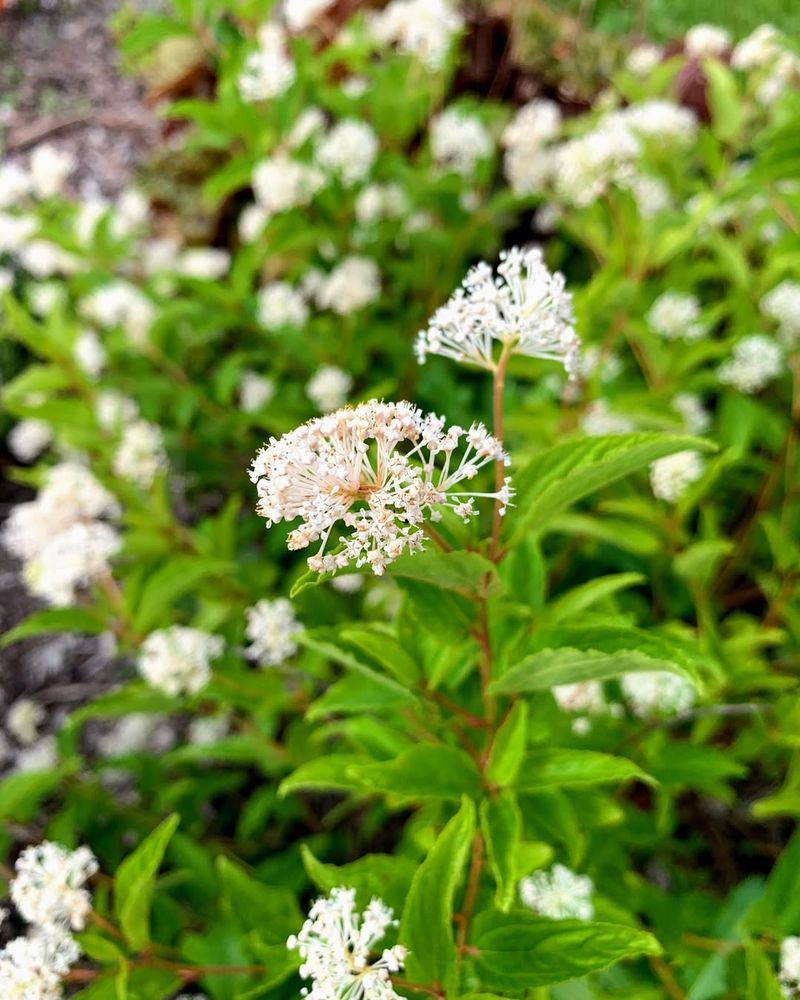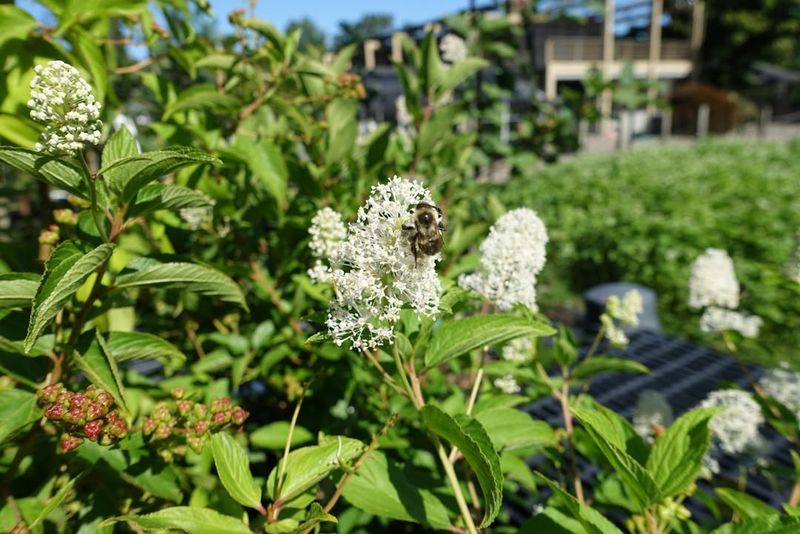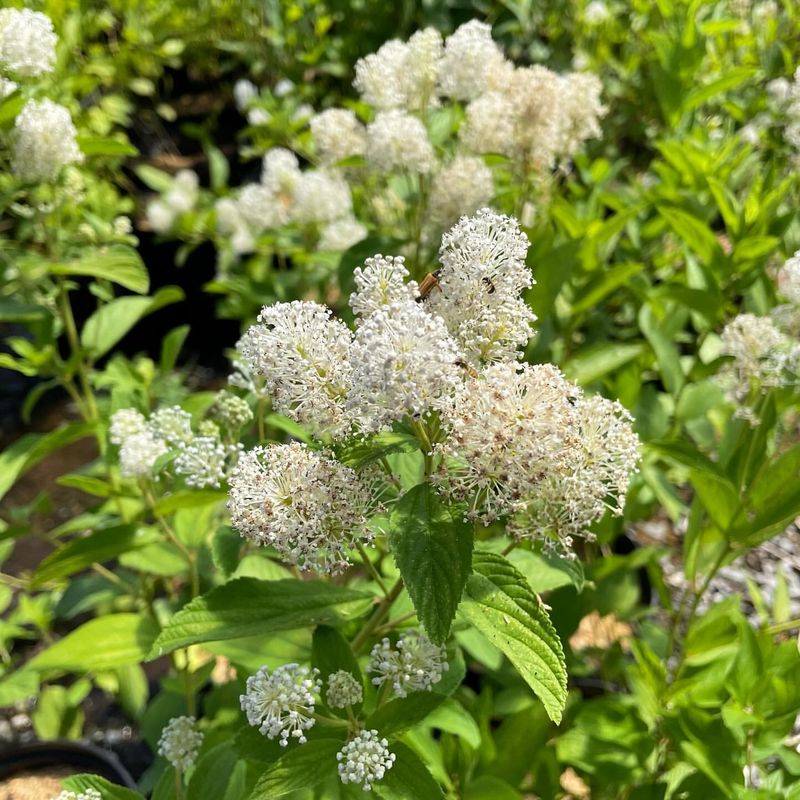New Jersey Tea is stealing the spotlight this season, turning quiet gardens into buzzing hotspots almost overnight. This hardy native plant packs more punch than its small size suggests, drawing bees in like kids to a candy shop.
Its clusters of bright blooms act as a built-in welcome sign for pollinators on the move, giving them a place to fuel up and keep the garden alive with color and motion. With just a patch of this plant, any yard can go from dull to dazzling, all thanks to the steady hum of busy wings.
1. A Native American Medicinal Treasure
Native American tribes discovered the healing powers of New Jersey Tea centuries before European settlers arrived. They brewed the leaves and roots into teas to treat fevers, colds, and digestive problems.
The plant contains compounds that helped with various ailments, earning it respect among traditional healers. Early colonists learned these remedies and adopted the plant for their own medicinal uses.
Today, herbalists still recognize its historical importance in natural medicine practices.
2. Revolutionary War Tea Substitute
When colonists boycotted British tea during the Revolutionary War, they needed a replacement beverage. New Jersey Tea became the patriotic answer to their problem!
People dried the leaves and brewed them just like imported tea, creating a caffeine-free alternative. The taste was pleasant enough that families continued enjoying it throughout the war years.
This historical connection gave the plant its common name, which has stuck for over two centuries.
3. Bee Magnet With Irresistible Blooms
Bees go absolutely crazy for New Jersey Tea flowers! The creamy white blooms appear in early summer and produce abundant nectar that pollinators find irresistible.
Honeybees, bumblebees, and native solitary bees all visit these flowers regularly throughout the day. You might spot dozens of bees working a single shrub during peak bloom time.
Planting this shrub creates a buzzing paradise that supports healthy bee populations in your neighborhood.
4. Tough Survivor In Challenging Conditions
Once established, New Jersey Tea laughs in the face of drought and poor soil. Its deep taproot system reaches far underground to find moisture that other plants cannot access.
The shrub thrives in sandy, rocky, or clay soils where fussy plants would struggle and fail. It handles summer heat waves without wilting or needing constant watering from gardeners.
This toughness makes it perfect for low-maintenance landscapes and difficult garden spots.
5. Compact Size Perfect For Small Spaces
Growing only three to four feet tall and wide, New Jersey Tea fits beautifully into smaller garden spaces. Its rounded, mounded shape looks neat and attractive without requiring much pruning or maintenance.
The manageable size makes it ideal for foundation plantings, border edges, or native plant gardens with limited room. Unlike some shrubs that grow wild and unruly, this plant maintains its tidy appearance naturally.
Homeowners appreciate its well-behaved growth habit season after season.
6. Nitrogen-Fixing Root System Benefits Soil
Hidden beneath the ground, New Jersey Tea performs an amazing trick that improves soil health. Special bacteria living in nodules on its roots capture nitrogen from air pockets in the soil.
This process converts nitrogen into forms that plants can actually use for growth and vitality. Surrounding plants benefit from this natural fertilization without any chemical additives.
Gardeners gain healthier soil simply by including this remarkable shrub in their landscape design.
7. Stunning White Flower Clusters In Early Summer
Each June, New Jersey Tea puts on a spectacular floral display that brightens shady garden areas. The tiny white flowers cluster together in puffy, two-inch-long groups that look almost like foam.
These blooms stand out beautifully against the dark green leaves, creating eye-catching contrast throughout the shrub. The flowering period lasts several weeks, providing extended beauty and pollinator support.
Gardeners eagerly anticipate this annual show that signals summer has truly arrived.
8. Important Food Source For Wildlife
Beyond attracting bees, New Jersey Tea supports many other wildlife species throughout the year. Deer browse the tender leaves and twigs, especially during winter when other food becomes scarce.
Butterflies visit the flowers for nectar, while various moth caterpillars munch on the foliage as their primary food source. Birds use the dense branching structure for nesting sites and protective cover from predators.
This single plant creates a mini ecosystem that benefits countless creatures.

